I never thought of myself as a procrastinator, until recently, that is. Reflecting on several “difficult” tasks, I realized that I was putting them off, to my own detriment. So last month, I decided to begin with one so-called “hard stuff” items and meet it head-on.
In my case, the hard stuff has to do with self-care. I spend a lot of time addressing the needs of my family, not to mention completing volunteer work for several local seniors’ organizations. What I don’t do is address my needs first—you know, put on my own oxygen mask before helping others’ with theirs. Although I have written about this exact topic on several occasions, I wasn’t practising what I was preaching. What did I need to address in terms of self-care? The biggest issue for me was my ballooning weight gain. Part denial, part resignation to my aging body, I believed things were beyond my control. I don’t drink, I cook from scratch, and I’m very physically active (including the recommended 2 strength training sessions per week), so it must just be the vagaries of a post-menopausal body was my thinking. It was time to do the hard stuff, including but not limited to:
While some of you may think this list is feeble and/or not that difficult, I say to you, hard stuff is entirely subjective. This is my hard stuff and it’s been the focus of the past month. And trust me, it feels really hard. In fact, I think the hardest part of all is telling you that I’m on a weight-loss journey. In some ways, it feels like defeat that I need to do this in the first place. As I head towards my second month, I can happily report that the number on the scale is heading in the right direction. And while I still find many of these tasks difficult to do, I also feel a sense of empowerment as I take control of my health and focus on me first. In my case, doing the hard stuff first is a positive step that has helped me move beyond procrastination. For now, at least.
0 Comments
There are many misconceptions about the concepts of introversion and extroversion, and I’m not here to school you on personality traits. There’s always Google and ChatGPT if you want to delve into it in more detail.
In a nutshell, I see myself as an introvert because I prefer to recharge my battery in private. If I don’t get a good dose of “cave time” every day, it impacts my ability to interact with others. Think babbling idiot who frequently inserts both feet in mouth, peppered with blank stares when engaged in conversation. Take your pick—my brain usually decides independently which option it will show the world when I’m spent: either my brain is in overdrive and can’t cope, or it shuts down completely (because it can’t cope). Since I’ve been introverting more and more these days, I’ve also been replaying in my head some of my not-so-stellar excursions as an extrovert. Like networking. For an introvert, networking can cause heart palpitations, sweaty palms, and a strong desire to flee. No fight-or-flight for this introvert—it’s flight all the time. At a time in my working life when networking was mandatory (downsizing meant I was switching careers), I sought advice from a business coach. “How do I handle networking events when all I want to do is run and hide?” “When you walk in a room, find the person standing alone and go talk to them. They’re probably feeling the same way.” That sounded much less overwhelming than walking up to a group of strangers, and it was something I could possibly attempt without passing out from overwhelm. His parting words stuck with me. “It works in social situations too.” I decided to put my newfound knowledge to the test when I was invited to a party. I knew the party hosts, but wasn’t sure I’d known anyone else there. I couldn’t rely on shadowing the hosts all evening, as they would be busy with hosting duties. When I arrived, several groups of strangers nearly scared me back to my cave. They seemed to know each other quite well, sharing inside jokes and family updates. I wandered around the spacious home, looking for someone I knew or, better yet, someone standing alone. My search led me to the kitchen, where a woman was standing near the sink, a few feet away from a group of partygoers. Here was my chance to practise my networking skills and hopefully make a new acquaintance. Try as I might, this woman resisted my attempts at conversation. Was I that bad at small talk?! I skulked out of the kitchen and hovered awkwardly on the outskirts of another group, nursing my bruised ego. A few moments later, I saw the object of my failed networking attempt emerge from the kitchen carrying a tray of hors d’oeuvres. She was hired to work the party, not interact with socially-awkward guests like me. I was equal parts relieved and mortified. It wasn’t me! I still beat a hasty retreat back to my cave. Feel free to laugh about my mishap. I laugh about it all the time, now that some time has passed.  Hotel Hank. Image by Amanda Sterczyk Hotel Hank. Image by Amanda Sterczyk The following excerpt comes from my upcoming 13th book, Shawna's Outreach: When we each give a little, a lot gets done, by Shawna Thibodeau and Amanda Sterczyk. All royalties from this book will go directly to help people living in poverty and on the streets of Ottawa. It's called, "A day in the life of a donation." Let’s meet Hotel Hank, the complimentary bar of soap we all pick up on overnight hotel stays. His journey is one example of how even the smallest item can have a profound influence on someone’s life. Hotel Hank has been languishing on the stairs of a suburban Ottawa home for at least six months. Don’t let his diminutive appearance fool you: he has big dreams. All he wants is to meet up with his pal, Water, and help someone get clean. Never quite making it to a water source, his mission has been thwarted. Until today. 9:37 a.m. A careless footfall on the stairs sends Hotel Hank reeling, tumbling end over end until he lands at the bottom of the stairs, slightly askew. The person responsible for said relocation picks up Hotel Hank with one hand, as the other hand scrolls distractedly on a smartphone. 9:38 a.m. A friend’s social media post about Shawna’s Outreach fills the smartphone screen. Coincidentally, it’s a post detailing the need for toiletries. 9:39 a.m. Eyes shift from one hand to the other, from looking at Hotel Hank to reading the post about Shawna’s Outreach. A lightbulb goes off as a plan is formed. 9:40 a.m. A direct message arrives at Shawna’s Outreach: “Hi, I have a bar of soap that I’d like to donate. How can I get it to you?” 10:37 a.m. Hotel Hank is delivered to a local shop that serves as a drop-off point for Shawna’s Outreach. Shawna will be coming by in a few hours to gather the items in this donation bin. In the meantime, Hotel Hank chills with the other products that are awaiting delivery to their final destination. 12:44 p.m. Shawna arrives and collects Hotel Hank and the other donated items. She brings them to the back of her vehicle and begins distributing them in the half-filled bags. Hotel Hank joins a bag that already contains the usual items (drink, source of protein, socks, etc.). 3:00 p.m. After a few additional stops to pick up more donations and sort them into waiting bags, Shawna arrives in downtown Ottawa to begin sharing the bags with the unhoused people she meets on the street. 4:12 p.m. The bag containing Hotel Hank is handed to a young man sitting on the curb. He quickly opens the bag and begins pulling out the items. A smile forms across his face as he takes out Hotel Hank, and he tells Shawna that he hasn’t had a shower in four days. He’s looking forward to using his new bar of soap—Hotel Hank. 5:13 p.m. Hotel Hank’s dream comes true at last as he meets his pal, Water. More exuberant than soapy bubbles is his pride in helping this young homeless person. It’s been a good day all around. Copyright: Shawna Thibodeau and Amanda Sterczyk 2023, all rights reserved.
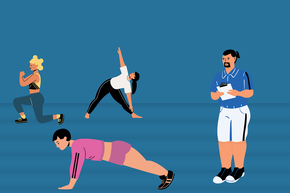 Image source: Elf-Moondance Image source: Elf-Moondance Unless you have been living under a rock, you are fully aware that Canada’s health care system is broken. More than one simple break, the problem is akin to a car window that shatters into thousands of tiny pieces on impact. Many problems that require many steps to fix all of the breaks. It is going to take years to dig us out of this hole, and it will require policy changes across the spectrum. I liken it to a giant cross-country jigsaw puzzle that can only be completed in small steps. Today, I want to address one potential component regarding the shortage of family doctors in Canada. The adoption of multidisciplinary health care teams, also known as team-based care, is vital to the future viability of our health care system.
When it comes to team-based care, a key component must be the inclusion of exercise professionals on these teams. The World Health Organization has identified physical inactivity as the fourth leading risk factor for premature death: "Regular physical activity is proven to help prevent and manage noncommunicable diseases (NCDs) such as heart disease, stroke, diabetes and several cancers. It also helps prevent hypertension, maintain healthy body weight and can improve mental health, quality of life and well-being.” (WHO guidelines on physical activity) In fact, the Ontario Kinesiology Association has been advocating for the inclusion of exercise-specific professionals to be included on all primary care teams in the province: "Exercise and physical activity are recognized unequivocally as among the most effective means to both prevent and manage chronic disease. Managing these illnesses is critical: Chronic conditions such as cancers, cardiovascular diseases, diabetes and chronic respiratory disease are the leading cause of death in Ontario. The cost of supporting individuals with chronic disease is estimated to be 55% of total direct and indirect health costs.” Indeed, a Canadian study demonstrated that patients want individualized physical activity recommendations from their primary care physicians. If team-based care is to be successful, not only should dieticians be added to these teams, but also exercise professionals. Lifestyle factors such as diet and exercise would go a long way to reducing the burden of chronic disease on Canadians and our health care system.  If you’ve been following my Facebook author page, you may be aware that I’ve embarked on my first author collaboration. If not, keep reading to learn more. Earlier this year, I met Shawna Thibodeau at a women’s networking event. Shawna runs a grassroots initiative called Shawna’s Outreach. She accepts donations from all over the city and creates outreach bags to distribute to people living on the street.
At the event, Shawna received a generous cash donation to support her outreach work. Attendees were also invited to see how they could support in their own way, which leads us to today. My idea was to write a book—you know, give back through writing. The book is called Shawna's Outreach: When we each give a little, a lot gets done. Shawna and I are co-authors on this book, and we’re excited to let you know that it will be available for sale in a few months’ time. I have donated my time and services to write the book, but I have also recruited a volunteer editorial team. Everyone involved in producing this book is donating their time and services, so that all royalties can directly benefit Shawna's Outreach. The book will cover who Shawna is, how Shawna’s Outreach began, who donates to and who benefits from Shawna’s Outreach, and much more. We are telling the story of the homelessness crisis in Ottawa with hope and humour—in effort to demonstrate that every small act of kindness and sharing is important. As we look towards a fall book launch, we hope those of you in Ottawa will join us. If you are outside the Ottawa area and would like to donate directly to Shawna’s Outreach, please get in touch via email: [email protected]. You can also follow Shawna's Outreach on Facebook.  It’s been five years since I published my first book. At the time, I thought I’d be a one-hit wonder. But I’ve gone on to publish a total of 11 books and one audiobook. So I now confidently introduce myself as a writer, especially since I’m working on my next few manuscripts. In recognition of my five-year authorship anniversary, I’ve been reflecting on what led me to write my first book, Move More, Your Life Depends on It. That was published in 2019, but I founded THE MOVE MORE INSTITUTE™ in 2016. It was an initiative I created to help sedentary individuals learn how to incorporate non-exercise activity into their daily lives. You know, how our grandparents used to live when they didn’t have so many labour-saving devices at their fingertips. Here’s a post about it from 2018, when I appeared on local television to promote my initiative: Living in the nation’s capital—home to the federal government and a multitude of associations and institutes—I wanted a whimsical, tongue-in-cheek title for my initiative. That’s how THE MOVE MORE INSTITUTE™ came into existence. But there was nothing formal or regimented about it. In reality, I was trying to work myself out of a job. You see, as a group fitness instructor and personal trainer, many clients participated in weekly exercise with me. But for many, that was the extent of their physical activity. The rest of their waking hours, they were mostly sedentary at work and home. I was trying to inspire people to sit less, move more--even if that meant they no longer felt the need to attend my classes or hire me for personal training. And that was a problem, because sitting had been identified as the “new smoking." You see, exercise alone isn’t enough. Daily movement that breaks up long periods of sitting is vital. I first read about this concept in the 2011 book, Sitting Kills, Moving Heals, by Dr. Joan Vernikos—the former Director of NASA’s Life Sciences Division. Vernikos was instrumental in astronaut John Glenn’s return to space at the age of 77. Although I wrote about Vernikos’ important work as early as 2014, Vernikos published her first book on the topic a decade earlier— The G-Connection: Harness Gravity and Reverse Aging. Although I can confidently say I’ve been ahead of my time with many of my publications, it is Dr. Vernikos’ ground-breaking research at NASA that led the movement to reduce sedentary time. When I realized in 2018 that many of my blog posts had already touched on this important topic, I knew I wanted to expand on my previous writing and turn it into a book. So that’s my story of how NASA inspired my writing career. If you haven’t had a chance to read Dr. Vernikos' work, I’d recommend any of her books. But my favourite is still Sitting Kills, Moving Heals. Other books by Joan Vernikos, Ph.D.: As an Amazon Associate I earn from qualifying purchases. And recovery requires you to patiently peel back those onion layers
Late last year—as in, days before the Christmas break—I walked away from my job for the same reasons. I had hit a wall and it was impacting my physical and emotional health. I equate my burnout to a raw onion: it makes your eyes water, leaves a bad taste in your mouth, and can cause indigestion.
I had had enough. My body had had enough. Right before I packed it in, every work email was triggering a fight or flight response: sheer panic about more tasks and responsibilities landing on my plate. Post-resignation hasn’t exactly been a walk in the park. It’s been messy and complicated. And it still feels like an onion, where peeling back the layers of recovery requires strength. Not to mention patience in dealing with that sticky onion layer that doesn’t want to let go. As I’ve peeled these layers back in my own life, I’d like to share with you some of the layers I’ve been through, in hopes that they might help you in your journey back from burnout. 1. Get comfortable with discomfort (yours and others). The discomfort is just one of many layers you need to peel away, and this one has multiple layers. I’ve had many sleepless nights since I left my job. At first, it was all about my brain processing what had led to the moment when I decided that quitting that very day was the best action. The discomfort here came from reliving a lot of little things that, taken on their own, shouldn’t cause employee burnout. But added up with all the other little things, well, let’s just say the sum of the parts is greater than the whole. The next layer of discomfort came from thinking about my colleagues. I felt like I was letting them down by leaving with work on my plate, some of which they would have to pick up and manage along with their own workloads. Unmanageable workloads seem to be quite common in many workplaces, and a wise friend advised me that it wasn’t my responsibility to sort it out for everyone. A further layer of discomfort reflected back on my actions, when I started thinking, “what was I thinking?!” You know, that I quite possibly made a wrong choice. In the end, I know in my heart that I made the best choice—the only choice--for me at the time. The discomfort comes from acknowledging and sitting with these uncomfortable thoughts, instead of dismissing them outright. 2. Take some time. At some point, I’ll return to paid work, of that I am sure. But for the moment, I’m taking time for myself—to breathe, to recover, to reset. Of course, I’m still promoting my books and thinking about new books that I might write in the future. But if and when I do return to the paid workforce, my books will once again become a weekend side hustle. For now, though, I’m enjoying having time on weekdays to work on them, with no pressure. I hope you too are able to take some time to recover. 3. Reject the tired recruiting belief about “finding a job while you still have a job.” Have you had someone spout these supposed words of wisdom to you? That the “best time to find a job is when you already have a job.” Have you said them yourself? I would argue that’s not always true. If you’re suffering from even the early stages of burnout and you jump ship for another organization, you’ll just transfer your burnout baggage to another employer. While it can be considerably less stressful to job hunt when you’re currently receiving a regular paycheque, it may be tough to present your best self during interviews if you’re already burnt out. Take it from me. Enough said. 4. Be kind to yourself. It can be easy to feel like it’s your fault when your mental wellbeing takes a hit in the workplace—as it does in the case of burnout. It’s not your fault you are experiencing burnout. I tell myself that every day; maybe one of these days I’ll truly believe it. And I hope the same goes for you. Remember why you left in the first place. It was the best choice at the time, so don’t feel guilty that you cut and ran—and I’ll endeavour to keep it in mind too. Bottom line, you need to look out for yourself. Conclusion. There you have it, my onion layers I’ve been examining as I reset and move beyond burnout. I’m sure I’ll discover more layers, more lessons. When I do, I’ll share them with you. For the record, I try to keep my eyes dry as I peel onions, with varying degrees of success. 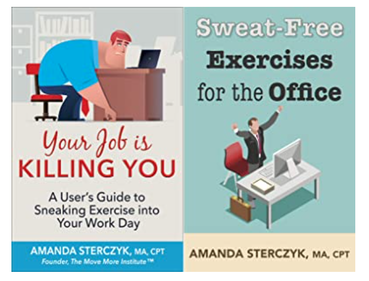 Workplace Wellness Through Physical Activity (2 book series) Workplace Wellness Through Physical Activity (2 book series) Do you have a desk-based job? Are you a professional sitter? The knowledge-based economy means that many adults sit at their desks and in meetings for hours at a time every day. Productivity, profit, and professionalism lead people to remain seated at all times. But we're not in an airplane, and there is no turbulence (hint: you can get up and move about the cabin). This physical inactivity is prematurely aging our mostly sedentary bodies when we sit at a desk all day. It is killing us. Being sedentary for too long impacts your entire body—your brain feels sluggish, your joints hurt, your muscles stiffen, and your mood turns generally gloomy. I think we can all agree that it’s difficult to be a productive person when you feel like that. What can you do to address it? Here's a simple exercise that you can easily incorporate into your busy workday: Active Sitting.* 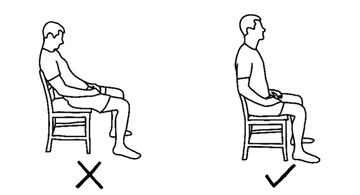 Active sitting helps us engage our muscles, strengthen our bones, and improve our posture. Instead of outsourcing the role of our muscles by slumping in our seats, we should sit tall. Aim for five minutes of active sitting every hour. To start: Begin by sitting in a chair that has a firm seat. Shifting forward: Sit up straight in your chair. You can slide your bottom forward so you’re not leaning back in the chair, or place your bottom right at the back of the seat with a tall back. Place both feet flat on the floor in front of you. If your legs are shorter and you can’t touch the floor, you can place a large book or block on the floor to support your feet. Don’t roll onto your tailbone. Imagine you have a tail and you want the tail behind you so you can wag it. Often, people roll backwards so they’re resting on their tailbone instead of their sit bones—these are the bony part of your bum, the lower edge of your pelvis. Shoulder position: Drop your shoulders away from your ears. It should feel like you're letting them slide down your back. Head position: Pull your head and neck back so your ears are sitting over your shoulders, not pushed forward. Your head is now positioned over your centre of gravity, which is allowing you to strengthen your bones by loading them. Feel your muscles and bones at work. Want more ideas for exercise options at work? Check out Sweat-Free Exercises for the Office. Content excerpted from "Sweat-Free Exercises for the Office", book 2 in the series Workplace Wellness Through Physical Activity by Amanda Sterczyk, copyright 2021, all rights reserved.
I am always astounded at how quickly the time goes during live appearances. This appearance was no different. Before I knew it, the host was wrapping up my segment, thanking me for my time and directing folks to visit my website for more information.
The next day, I received an email from someone who did just that. They wanted to know about my books and where they were available. They had seen me on the episode of Daytime Ottawa, and they wanted to access my books. I directed them to my Amazon page first (not knowing yet that they lived locally), then indicated they could buy directly from me if they were in the Ottawa area. "I saw you on TV, but I can't afford your books." The email response did not deter me, as I directed them to our library to access them for free. I am so proud that my library has chosen to put their faith in my books by ordering multiple copies. Libraries support education and literary in an equitable fashion. As a child, we didn't have a library branch near our home, but we did have monthly visits from their bookmobile. It was my favourite day of the month. When I published my first book, it was a great feeling of accomplishment. It was only when I saw that book in circulation at our library that I truly felt I was an author. Even if you can't afford to buy one of my books, I hope you'll be able to access it via the library. If you live in another city, you can request that they purchase a book. This blog explains how to do it. And if you'd like to request they purchase one of my books, you can find details you'll need for your request by following the book links on my Amazon Author Page. On that note, I'm off to read a book. That I checked out of the library. 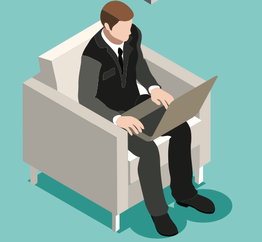 What a strange year it has been. A once-in-a-century pandemic has uprooted the entire planet, the toll to human life staggering. No one has been unaffected by the events of the past year, including me. Here’s a brief glimpse into the past year, from a recovering fitness professional. Shortly before the world got turned upside down, I began a new chapter in my life. My fitness business of more than a decade was shelved in favour of a full-time job for a health charity. If you’ve read my fitness memoir, I Can See Your Underwear, or even the excerpt I shared one year ago, you’ll know that I was feeling burnt out from focusing on other people’s fitness goals, at the expense of my own. That’s what partly precipitated my retirement from being a fitness entrepreneur—I needed to put my goals first. The office job was a way to reclaim my evenings and weekends—punch a clock and contribute when at the office, while focusing on myself during my down time. I even managed to find a job that allowed me to engage in active transportation—the office was a 40-minute walk in each direction, a 19-minute bike ride when the snow finally melted. And then it happened—seven days in to my new role, everyone who could was instructed to work from home until further notice. [Spoiler alert: one year later, we’re still awaiting details on the return-to-the-office plans. Thankfully, none of us have been holding our breath.] Overnight, my commute became much shorter—eight steps from the kitchen to my desk, eighteen steps from there to the bathroom. The line between home and work blurred for many, myself included. I spent many more hours in a seated position, and it didn’t take long for my body to protest. You’ve heard of the Freshman 15? Well, I acquired the COVID 19. All that extra sitting began wreaking havoc on my now-larger frame. Another lockdown during the worst of the winter months meant that, in addition to being more sedentary that I ever have, I was also less physically active. That’s when the pain started. It began with foot pain in my left foot, then in my right foot, followed by low back pain and excruciating hip pain. Some targeted physiotherapy treatments helped, as well as a gentle reminder from my physio to do daily stretches. I began with a few minutes of stretching when things started acting up. The stretching helped and I was thankful I could draw on my fitness background for my own needs. And yet, my problems with pain persisted, even worsened. Until, that is, I went back to my roots. You see, it was a love of the very popular PBS fitness show Classical Stretch that opened me up to a career in fitness. I first discovered Classical Stretch on a snowy winter’s day in late 2001. I practiced it on and off throughout the decade, always feeling better after the 22-minute full-body rebalancing it provided. I jumped into the fray, beginning instructor training in early 2010. One thing that happens when you’re a group fitness instructor is that every workout you do is focused on your clients’ needs. But now, back to doing my own workouts in my living room—often in my pjs—I could focus once again on my own needs. And boy, did I need a full-body rebalancing! After a decade as a teacher, I was experiencing a renaissance as a student. And practicing what I often preached: the best exercise for you is the one you enjoy. Because if you like it, you’re more likely to do it. So I’m back to tried-and-true 22-minute workouts in the comfort of my own home. And my body thanks me every day. What’s the lesson here? When it comes to exercise, physical activity, and just plain movement, find what you love and keep going. Wash. Rinse. Repeat. *To be clear: the weight gain was due to my constant close contact with the kitchen. I have been eating more than I needed to, from a caloric perspective. My weight gain was food-based, not due to a lack of exercise.
|
Categories
All
Archives
July 2024
AuthorAmanda Sterczyk is an international author, Certified Personal Trainer (ACSM), an Exercise is Medicine Canada (EIMC) Fitness Professional, and a Certified Essentrics® Instructor. |


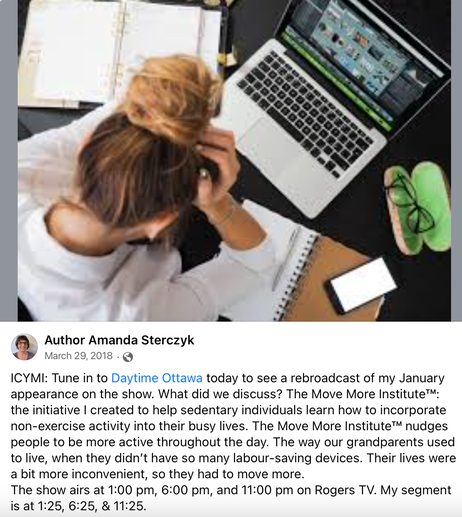

 RSS Feed
RSS Feed